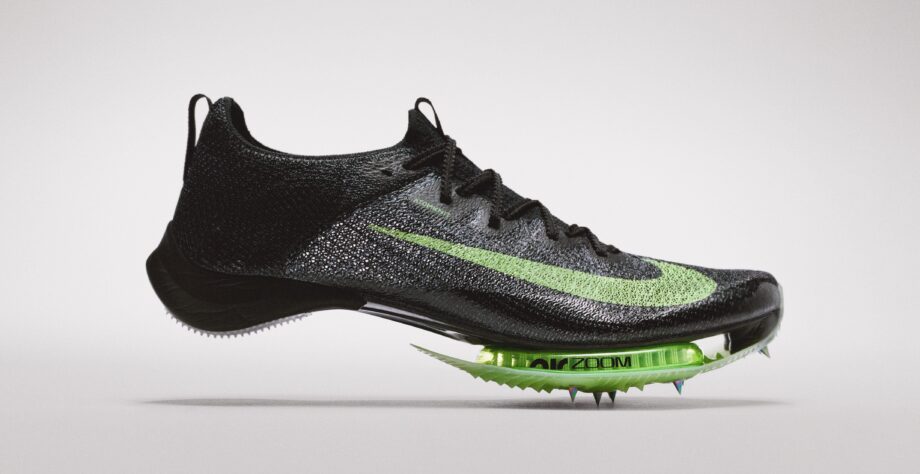Nike is working on creating footwear that directly caters to athletes who are participating in the Olympics. They are diving down into the detail of every event to see how they can best improve the designs. This resulted in a new line of shoes: the Nike Zoom Viperfly, the Air Zoom BB for basketball, the Air Zoom Mercurial for soccer, and the Nike Air Zoom Alphafly NEXT% for elite runners. Athletes contribute performance insights to the lab through testing and verbal feedback that the researchers quantify into performance, movement, and fatigue data. In 2018 we saw the addition of ZoomX foam and technology using carbon fiber plates to increase running efficiency. The shoe’s cushy foam midsole lowered energy expenditure, reducing runner fatigue and resulting in faster times. Nike’s chief design officer hopes to provide athletes with products that allow their body to perform better.
The Nike Air Zoom Viperfly track spikes are designed specifically for the 100-meter race. The footwear features a denser knit through the body of the shoe for support through the heel. The Nike Air Zoom BB uses Nike React foam under the heel, allowing athletes to carry less weight and receive more energy return with each step. The Air Zoom Mercurial has a 3D printed flyknit-like upper which is known as Flyprint. 3D printing allows for the most precision with the Mercurial. As for the Nike Air Zoom Alphafly NEXT%, it has significantly larger cushioning specifically for comfort and energy return. Two exposed Air Zoom bags sit side by side for extra cushioning. They are used for impact protection and include the freedom to expand in order to minimize energy loss and maximize responsiveness. 3DShoes.com hopes to see many 3D printed footwear in any upcoming athletic events. As time goes by we will continue to see just how innovative the technology can be.
Original Article: https://techcrunch.com/2020/02/05/how-nike-is-making-footwear-to-improve-athletes-efficiency-for-the-tokyo-olympics/
#3DShoes #3DPrintedShoes #3DPrinted




